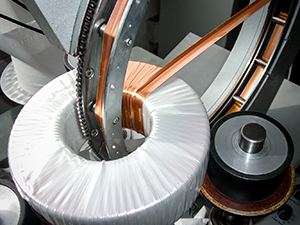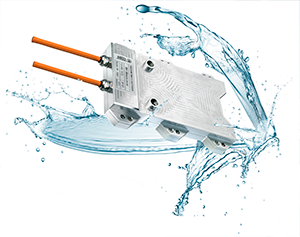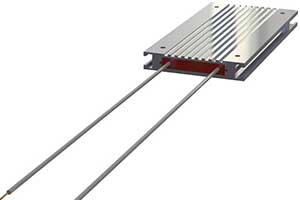Streamlining electrical components

Variety is the spice of life. But, as anyone who’s tried to throw a curry together without a recipe knows well, you can certainly have too much. When specifyingelectrical components, engineers are often presented with dizzying spreadsheets filled with technical datapoints, for hundreds of devices. Here, Steve Hughes,managing director of electrical component specialist REO UK, explains why REO is streamlining its offerings to improve support for electrical and design engineers. American author Alvin Toffler coined the term overchoice in 1970. This is the idea thatan overabundance of options increases the effort it takes to make a choice. Counterintuitively, it’s been found that more choice is detrimental, as thoroughly researching the options to pick the right one could potentially take days or even weeks. The average person might face this issue in the supermarket when choosing a detergent among the hundreds of ostensibly similar products. For the electrical engineer, however, the problem is far more imposing and acute. For instance, installing an underrated braking resistor in a wind turbine could have catastrophic, potentially explosive results in the event of overspeed or transmission failure. Similarly, an overwhelmed powerline communication filter could cause devices to switch unpredictably, causing unplanned downtime, as well as requiring monitoring and maintenance in the excess. These errors apply both ways. While not actively as dangerous as above, usingoverrated components is simply a waste of time, money and effort. High power components are often less efficient, and invariably heavier and bulkier than their low power counterparts. This decreases efficiency in mobile examples, such as electric vehicles. Somewhere, hidden between these two extremes, lies an ideal component. Yet when presented with a page full of options with complete information, electrical engineers have the unenviable task of finding it. Demystifying this decision is the primary motivation behind REO’s product streamlining.In lieu of providing a buffet of options and leaving buyers to fend for themselves, REO isinstead now offering fewer choices, while providing more comprehensive advice and support. This more effectively supports engineers in making the correct choice, first-time. A sum of the REO parts Another aspect to consider is the current and ongoing electrical component supply chains. Numerous demands, such as the rise of the electric vehicle, have risen dramatically within a short time. While supply has increased to meet these requirements, international tariffs and trade disputes over raw metals have further exacerbated the shortage. The major impact this has for purchasers is to dramatically increase lead times for devices including these components. For instance, many types of capacitors have seen lead times more than double from 15 to over 30 weeks in less than three years. This is another part of the motivation behind streamlining REO’s offerings. By reducing the sheer number and variety of devices on offer, earmarked component stockpiles can be reassigned to where they’re required. REO UK, now in its 30th year of business, looks to lean on those decades of industry experience to provide complete, cradle-to-grave support for fewer, selective and highly focussed products. As mentioned, variety may be the spice of life in many ways, but nobody enjoys wadingthrough spreadsheets of mind-numbing data. We’ve selected the perfect combination of ingredients for your project — just pick up the phone and ring REO at +44 (0)1588 673411.
Choosing between air and water cooling resistors

With rising ambitions to meet sustainability targets, the International Energy Agency (IEA) aims to have 220 million electric vehicles(EVs) on the road by 2030, EVs are fuelled by battery power and overheating must be avoided to ensure reliable and efficient operation, Here, Steve Hughes, managing director of specialist electrical components manufacturer REO UK, explains the difference between air and water cooling braking resistors. The effects of temperature on a product’s performance has always been an important design consideration. Overheating can reduce efficiency and the lifespan of components. So, whether a product is subjected to environmental heating or cooling, or if it generates its own rise or drop in temperature, managing temperature is critical. At REO UK, many of our customers are in the marine, renewable and railway sectors, all of which must operate in extreme environmental conditions where standard electrical items are not always fit for purpose. From our experience, many of the challenges components face in these sectors, like temperature, are also applicable to automotive manufacturers. Most manufacturers understand the importance of effectively addressing and understanding heat transfer considerations early in the design process, saving time and minimise prototyping costs. Despite this, many original equipment manufacturers (OEMs) are unsure how to choose between the two main ways of regulating device temperature: air-cooling and water-cooling. Braking resistors are used to dissipate heat and slow down a mechanical system to avoid overheating. Brake resistors have relatively low ohmic values, a high-power rating and are typically encased in a frame to create a safe distance between surrounding components. To increase its dissipation capability, the resistor’s frames feature cooling fans or liquid coolants. Traditionally, air cooling has been most commonly used as it is relatively inexpensive and require little maintenance, other than the replacement of filters. This is because the fan technology is robust and able to undertake some degree of damage without impacting performance significantly. For example, if a single fin broke on the fan it would remain functional and safe to use. Air-cooling, however, does come with its limitations. Firstly, the integration of a fan means that the enclosures of the device generally must be bulkier to accommodate it. This means that air-cooling cannot be used in applications where space is limited. Air fans also create an additional source of noise, unlike water-cooling alternatives like the REO braking resistor D 330. Suitable for integration in EVs, the resistor works by converting excess electricity that is not needed for recharging the EVs battery into heat that can be dissipated safely or as energy that can be regenerated into the vehicle’s power supply. This is an effective use of energy that would otherwise simply be lost. It also reduces the need for resistance heating using the battery’s energy, which can reduce the vehicle’s driving range. The benefit of using a water-cooling resistor in an application like this, is that they can be easily integrated into the existing cooling systems of the vehicle and are able to deliver cooling on the areas where fans often fall short. Water-based systems operate on a very simple principle of heat exchange whereby pipes containing a liquid coolant circulate around an enclosure and out of the device to keep components cool. The excess heat generated during use is thermally conducted by the water in the pipes, which can then be transferred out of the device and regenerated for other processes. With EVs, automotive manufacturers aim to make driving as energy efficient as possible. Not only are fans in air-cooling systems limited by their reliance on ambient temperatures to cool down overheating components but depending on the size of the application, OEMs may need to integrate multiple fans as opposed to just one. In comparison, water has a high heat conductivity and only requires a single pump to cool infrastructure, significantly lowering the overall energy consumption and cost of the cooling system. Another advantage is that coolant can be stored in the pipes below the application’s ambient level for even faster cooling. Water cooling is the only method that permits cooling below the ambient air temperature and is ideally suited to industrial applications. In addition to maximising efficiency, resistors like our REOHM series D 330 make an additional space saving of up to 88 per cent. The use of a water cooling system allows optimal temperature characteristics to be achieved, while the performance of the component is improved. The adoption of electric vehicles is only set to increase in the coming years and automotive manufacturers must be able to select the right components, like resistors, and technologies for their design. By considering the factors that affect equipment performance, engineers and OEMs can ensure they make the right choice between air-cooling and water-cooling every time. For more information about components for electric vehicles, visit the REO UK website and download the electric vehicle power whitepaper.
Resistor for renewables

With UK Government figures reporting that renewable energy accounted for almost 30 per cent of energy generated, power quality specialist REO UK is focussing on ensuring reliable power generation for the future. The company has launched the REO BW151 Resistor Kombi, a braking resistor for renewable applications such as wind turbines and electric cars. Braking resistors work to ensure the safety and longevity of electrical components. If there is surplus electricity in the circuit and it cannot be regenerated, then the energy will put excess wear on the electrical motor drive system, which will harm it. Braking resistors absorb the surplus load that is created and convert it into heat. This also creates a braking effect, slowing down the moving mechanised load, which can make the movement much safer and protect the electrical drive system. The REO UK BW151 resistor has special aluminium profiles for fast-temperature derivation or is also available as a water-cooled version. It provides a high-power density in a small area and has various switching and combination possibilities for different applications. “As the renewable energy sector and the electric car market grows, there is an increasing need for electrical components that are well designed,” explained Steve Hughes, managing director of REO UK. “The UK Government will be investing £246 million in battery technology to help manage the storage of renewable energy. However, braking resistors are also an important component in ensuring the safety and efficiency of renewable energy generation. In wind turbines, the REO BW151 resistor is safe for use onshore and offshore. In faster winds, cyclical braking is introduced, causing the turbine blades to slow. By using a braking resistor, the excess energy will flow into it, away from the generator, reducing the weight and turning the load into heat.” He continued. For more information about the REO BW151 resistor, please click here or call 01588 673411.




